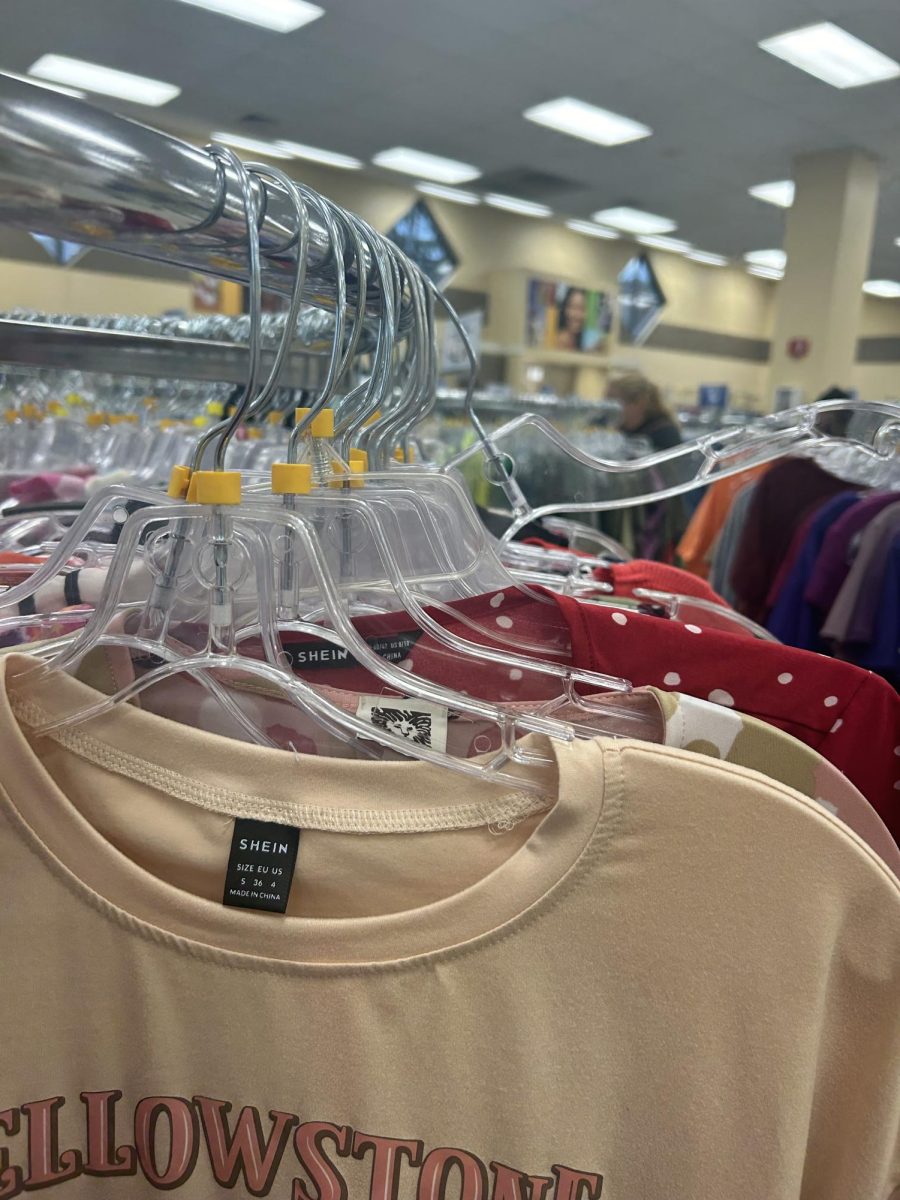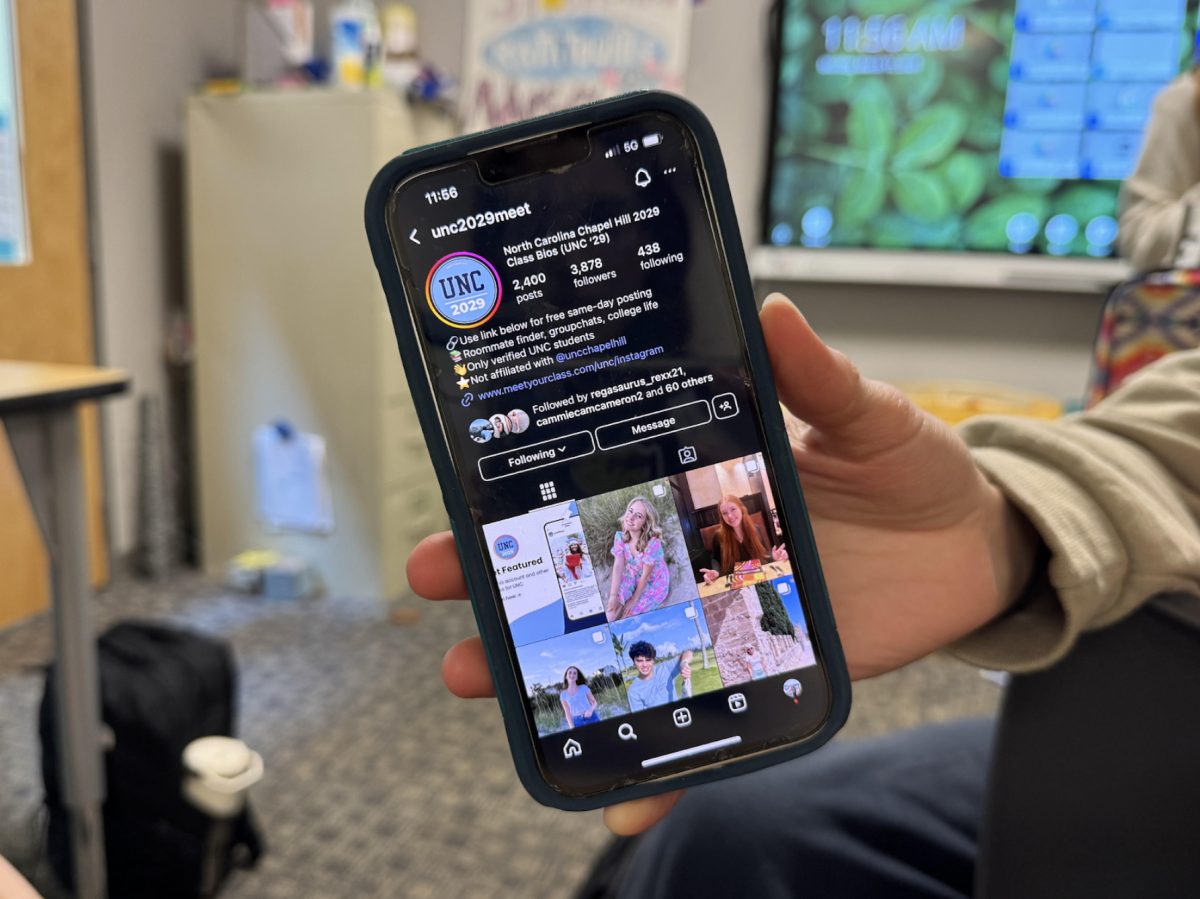Imagine for a moment you are scrolling through your TikTok “For You” page one morning, when you stumble across a video of your favorite influencer wearing a grey crewneck with a giant pink bow on it. The text on the video says “run, don’t walk to Target for their new bow crewnecks!”
So you do. You run to Target later that day and buy the bow crewneck.
You feel satisfied and trendy.
You wear it to school that week, receive compliments and keep feeling great.
A month later the trendy crewneck goes out of style. Suddenly, people all over TikTok are calling the bow trend “overdone.”
Your heart sinks.
You take a look at the bow crewneck you bought only a month ago and notice that the graphic are already peeling off the fabric. Because the crewneck is already damaged and the trend is now out of style, you decide to throw it away.
You are a victim of a micro trend.
A micro trend is a trend that comes and goes in a matter of years, months, or, in this case, even a few weeks.
Social media can cause young people to act and be easily influenced by micro trends. A simply catchy post can convince a follower to buy clothes that may go out of style in months, or weeks.
The quick changes are mainly a result of social media. With apps like TikTok and Instagram, and their increased use by young people, trends move as quickly as users scroll through their feeds. Young people are easily influenced and buy clothes with a short-term priority in mind.
Along with the influence of social media, the influence of fast fashion companies like SHEIN and Zara also heavily influence micro trends. A certain trend can go viral on TikTok, and 24 hours later companies like SHEIN and Zara can produce it and sell it for under $20 using direct to consumer sales and expedited shipping. This fast cycle also causes trends to fade very quickly, hence the term “micro trend.”
With fast fashion and consumers buying so much, the problem leads to overconsumption.
Overconsumption is the excessive use of goods and services, or in this context, clothes.
Community School of Davidson (CSD) senior Chance Orsi (‘25) says that she has been influenced by fashion microtrends that die out quickly.
“If it’s a new fashion trend I might not keep those clothes for a while because the trend has already died out after a couple of months,” Chance Orsi said. “I definitely fell for the low rise jean trend coming back and now it’s kinda dying out and I’m getting a little bit worried it may be out of style already.”
These new clothes, sometimes still with the tags on them, die a quick death. These clothing pieces often end up in a landfill 2 months later, because the trend is already out of style and everyone has moved onto something else.
Overconsumption has an obvious and significant impact on the environment. One of the main components of waste globally is from the fashion industry. Fast fashion companies often use materials like polyester, which is essentially plastic, and does not decompose. These clothing pieces are often thrown away due to the cheap, uncomfortable material that is used.
CSD students agree that they have wasted money on fast fashion due to the horrible quality.
“In seventh grade when SHEIN became a really big thing I decided to buy some clothes from SHEIN and they were the worst quality clothes that you could buy,” Madeline McKinley (‘25) said. “It was definitely a waste of money.”
Fast fashion companies have also been significantly under fire for the unethical processes they put their workers through to turn these clothes out so quickly. Fast fashion companies often source their labor from developing countries that have lower wages, and less regulations on labor. The average wage for an H&M factory worker is $2.63 for working all day, 6 days a week.
Factory conditions are horrendous, too. In 2013, the Rana Plaza disaster happened where the eight-story garment factory collapsed and killed 1,134 people.
Regardless of the employee treatment and negative press, most consumers continue to buy without regard.
Shopping for clothes in general has also become agonizing for the consumer. As a result of overconsumption, thrift stores have become full of overpriced fast fashion and shopping for cute, good quality timeless clothes has become almost impossible.
High school students with limited funds are typically drawn to thrift stores but continue to shop, hoping to find that “needle in a haystack” piece of clothing.
“I definitely think people need to sift through the racks at thrift stores a lot more because the thrift stores are full of fast fashion now” Kate Saussele (‘25) said. “But I think if you really take the time to look you can find good stuff that isn’t cheap quality.”

(Mia Kirsch)
The good news is that along with the recent trends of thrifting and buying second hand clothing comes the awareness of overconsumption, which will hopefully encourage people to stop consuming so much fast fashion.
Dedicating time and resources to finding out where and how clothing is made may help the environment, too. Buying sustainably and second hand will help the cycle of fast fashion. Even buying an item that will be worn for years to come also helps the cycle.
There is hope and actions consumers can take that will break the pattern. Stop scrolling, stop buying and stop reacting to what you see. Next time you come across a new fashion trend on your TikTok, think about the environmental impact you may be making, the person making that item, and if you will actually wear it for years to come.















AK • Mar 24, 2025 at 6:24 pm
Great article!!